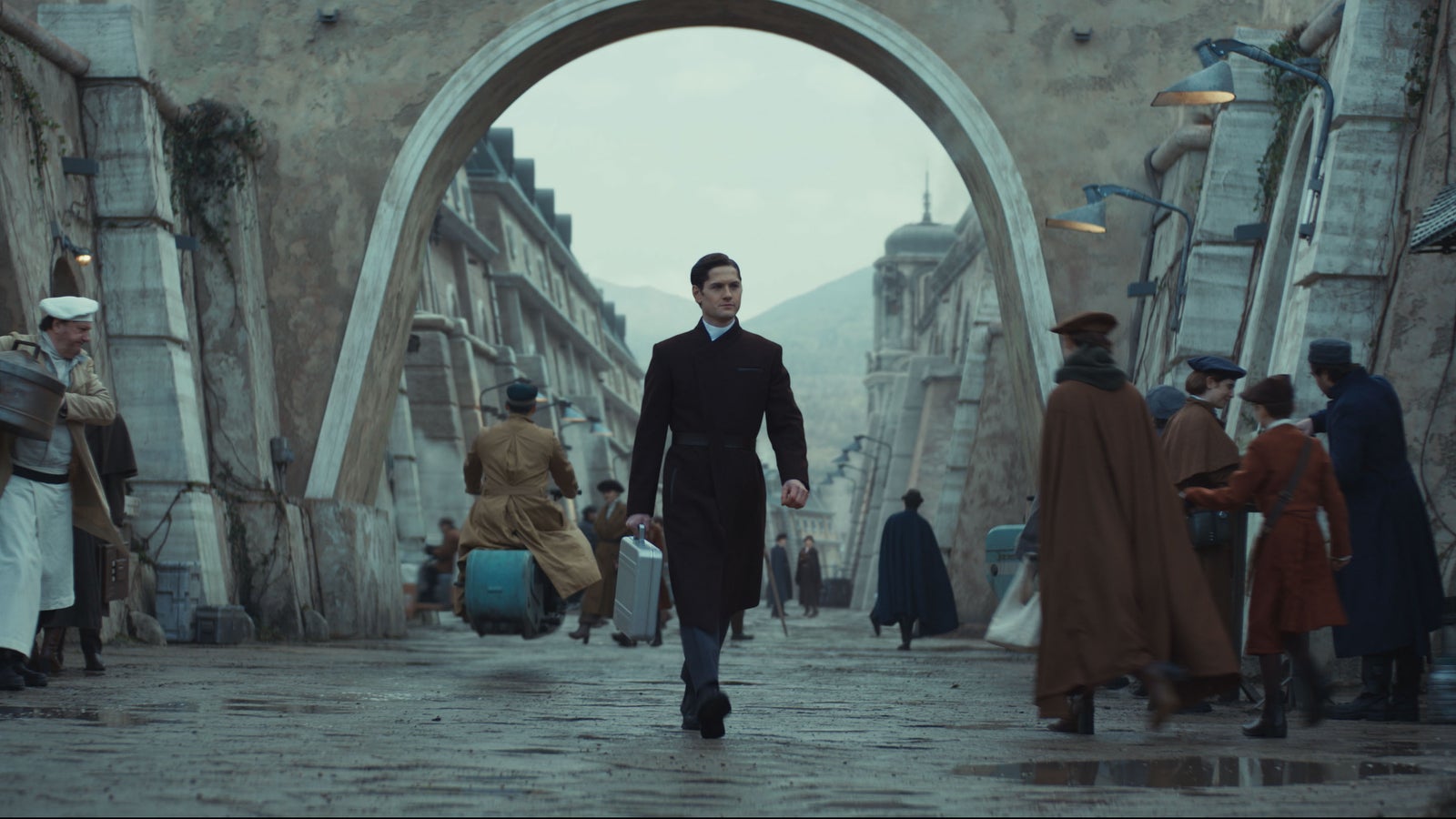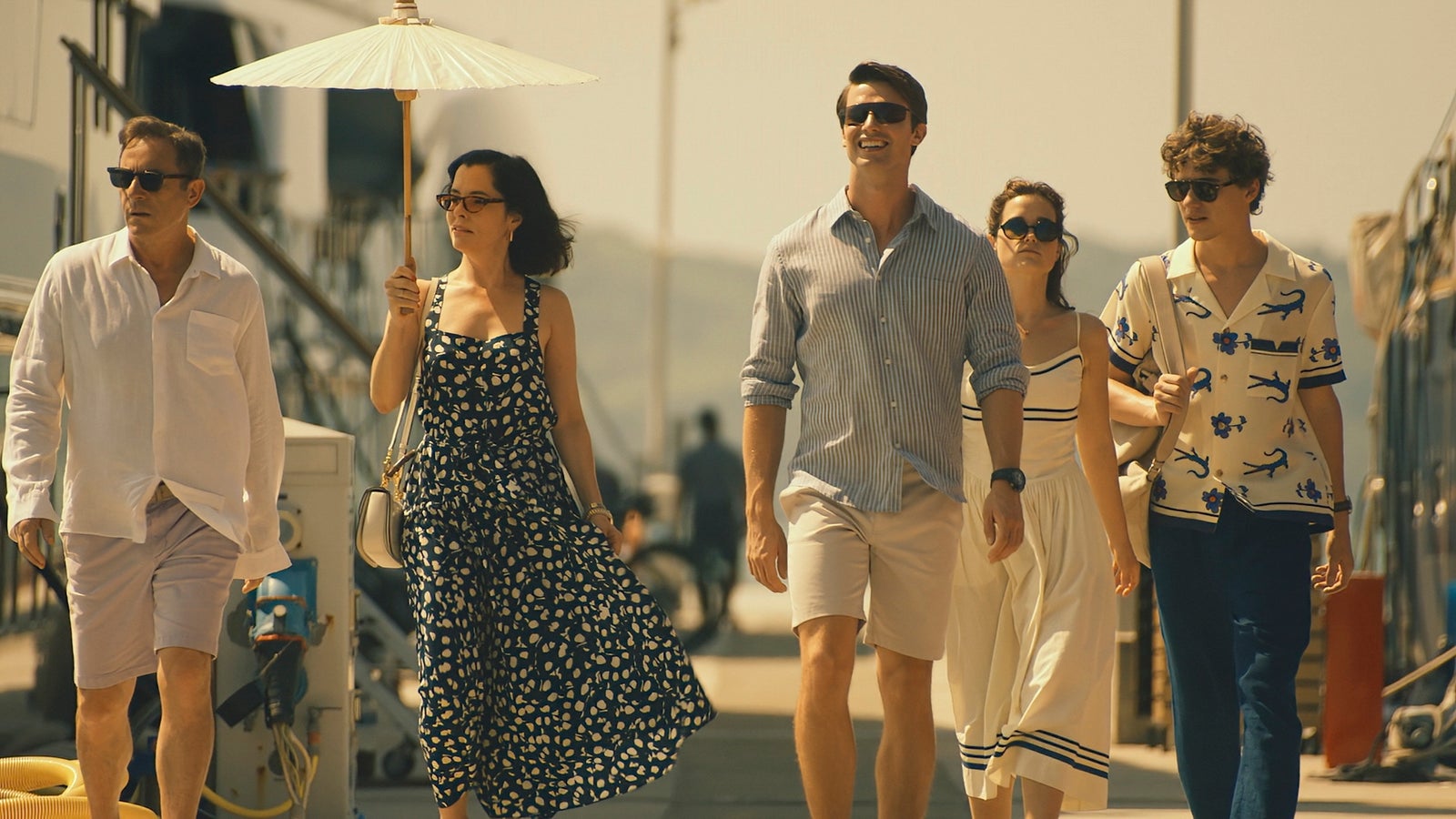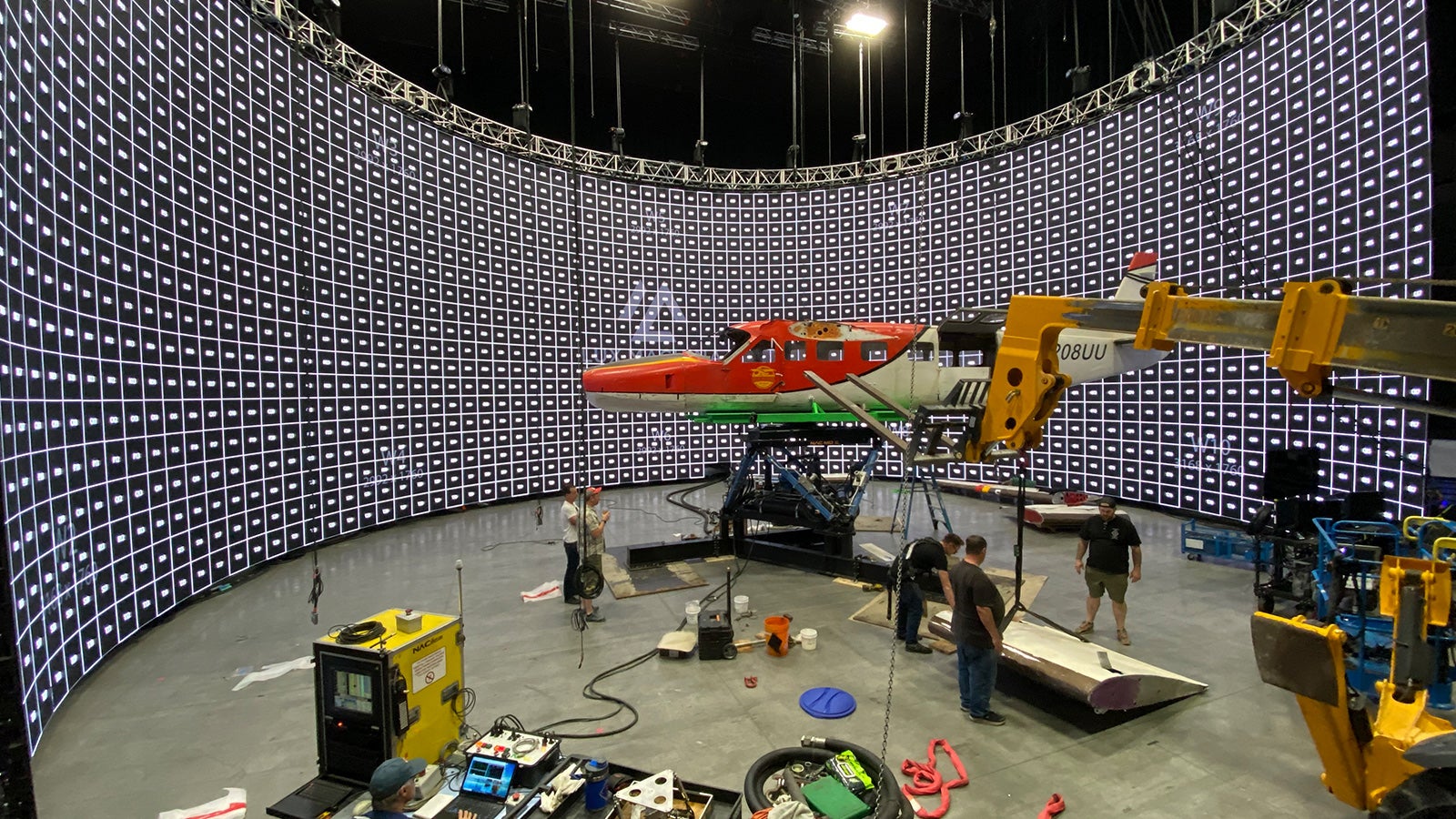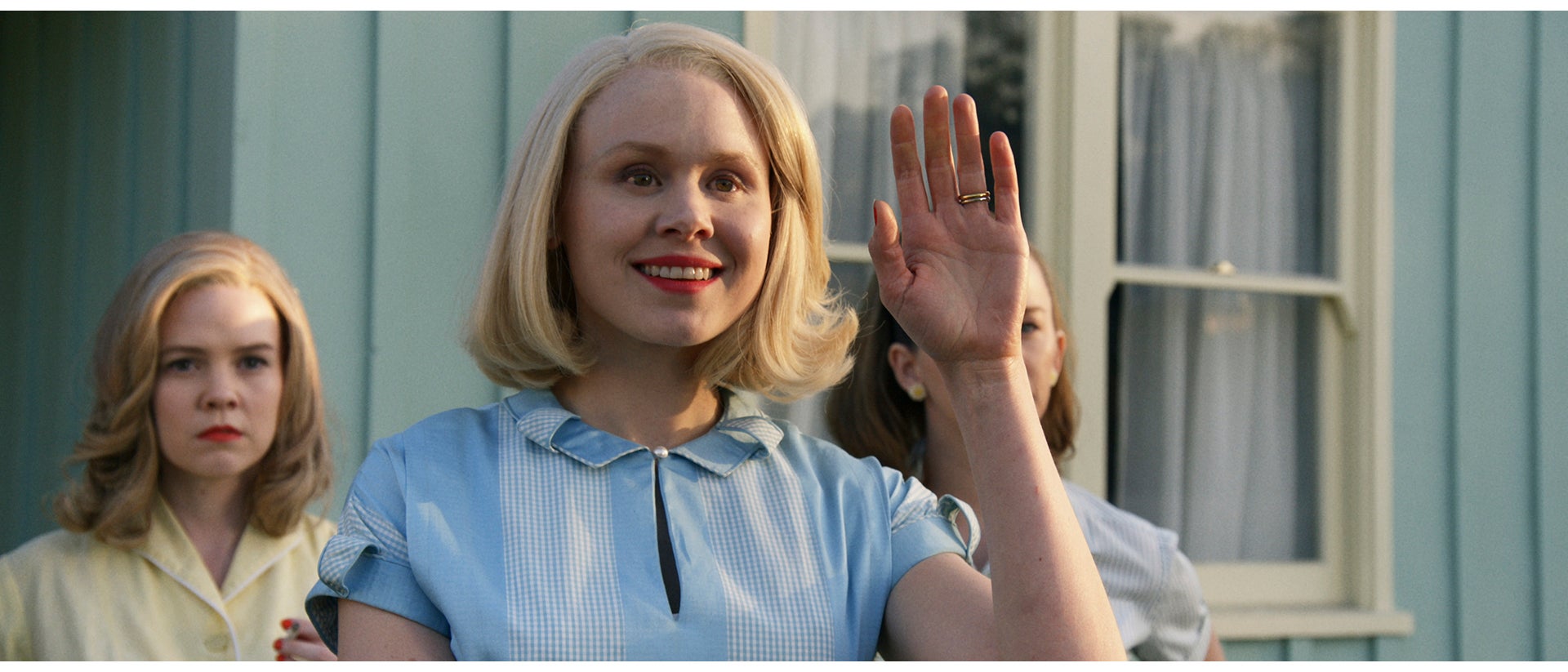
05-05-2021 - Case Study, Gear, Technology
Shooting “Them”: Checco Varese, ASC and Xavier Grobet, ASC Bring the TV Series to Life
By: Suzanne Lezotte
Created by Little Marvin, the story of a Black family moving from North Carolina to Los Angeles in the 1950s, set in motion a chain of events as they take ownership of a house in all-white Compton. The anthology series, unofficially known as “Covenant,” follows the family, after an unnerving prologue, amid effects of racism as their white neighbors protest their occupancy.
Coupled with a creepy basement, and fantastical alter egos that show an internal horror happening in tandem, the show was created and written by Little Marvin, directed by Nelson Cragg, and shot by cinematographers Checco Varese, ASC who set the look, and Xavier Perez Grobet, ASC (“Watchmen,” “Sorry for Your Loss” and “Unbelievable”), with help from Suki Medencevic, ASC on Episode 3. Varese, who has horror films “It: Chapter Two” and “Prom” in his arsenal, admitted he isn’t a fan of watching the genre. “I don’t believe this is a horror show,” he explained, “it is a drama with an intrinsic fear factor embedded in it. But the fear doesn’t come from the usual suspect; it comes from what we don’t see. I painted with shadows in this project.” Another critical member of the team was DIT Daniele Colombera, who had not worked with either of the cinematographers before, but is now currently on a second project with Varese, titled “Dopesick.”
Varese explained that he and Little Marvin clicked immediately, and he was asked who he wanted to partner with. “It’s a hard thing to ask; like choosing a partner in crime,” he joked. His friendship with Grobet has extended over the past 30 years, and although they had never worked together, he respected his work. “Xavier was a fantastic partner for this,” he extolled.
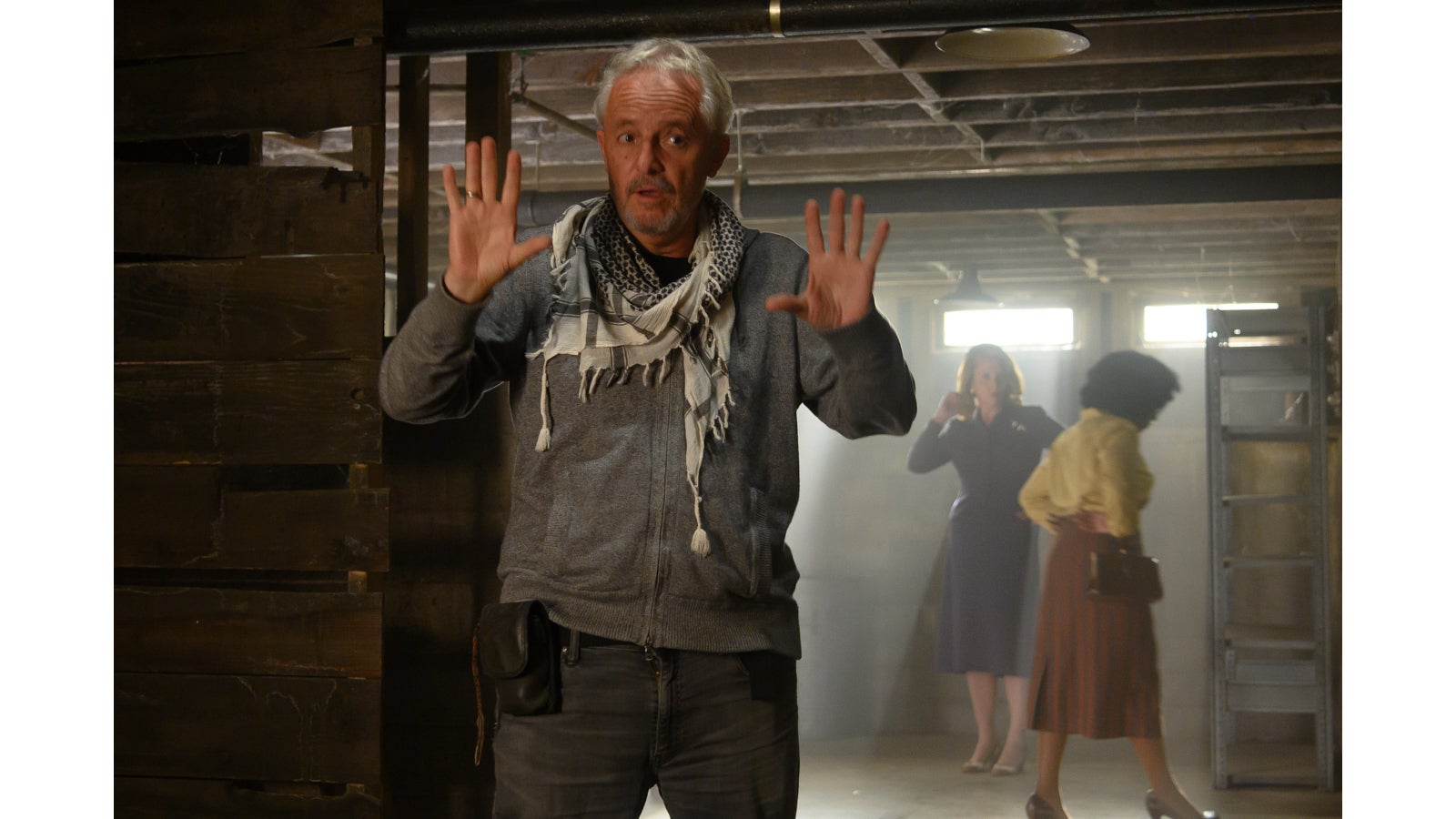
Checco Varese, ASC
For Grobet, when the show was brought to him, “I loved the premise, and the fact that it was based on real events that had happened in the fifties.” When he realized he would be working with Varese, he was delighted, because of their friendship and was “happy to get the chance work with him.”
Grobet acknowledged that in this new world of television and alternating DPs, the two of them collaborated really well together. “Checco gets the credit, he set up the show even though I was involved from the beginning. I was shadowing him and giving my opinion. I feel like we were well matched, and I loved coming up with solutions with him. We even joked that we should sell ourselves as a package deal, since we have the same agent,” he said.
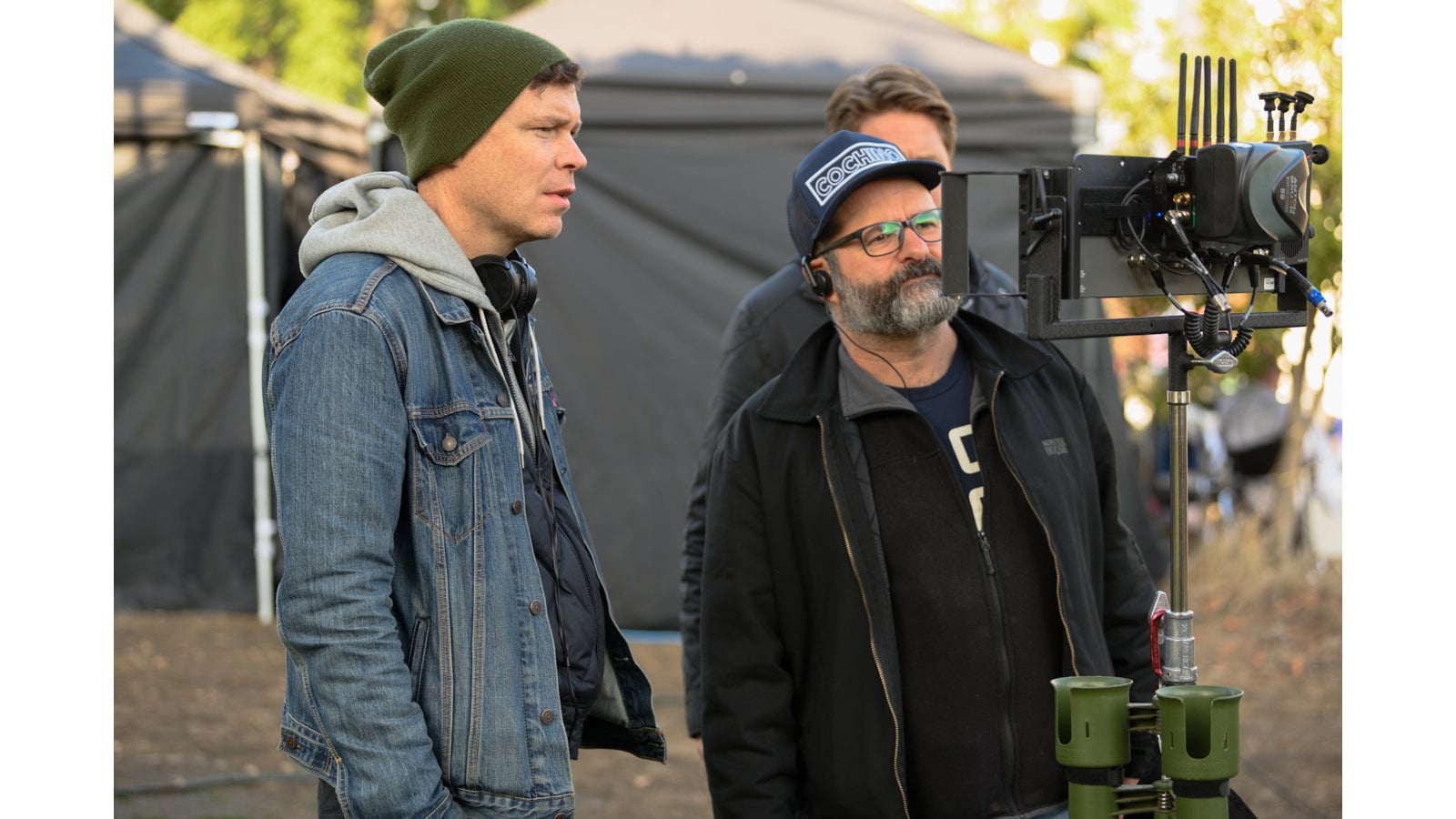
Xavier Perez Grobet, ASC, at monitor in glasses
Choosing the Sony VENICE was a decision made “because I wanted to go seamlessly into a very dark world,” said Varese, “with a camera that could dig into blacks, and a very light world, because of Compton, where the sun is shining. I found the Sony VENICE was the best choice for this project. Once you land that, you start thinking what brushes are you going to use to paint with. To me, the brushes are the lenses.” Grobet agreed. “I thought it was perfect for the show, the 2500 ISO setup on the camera is very helpful, especially for the scenes with candles and fire. I really like the quality of the image.”
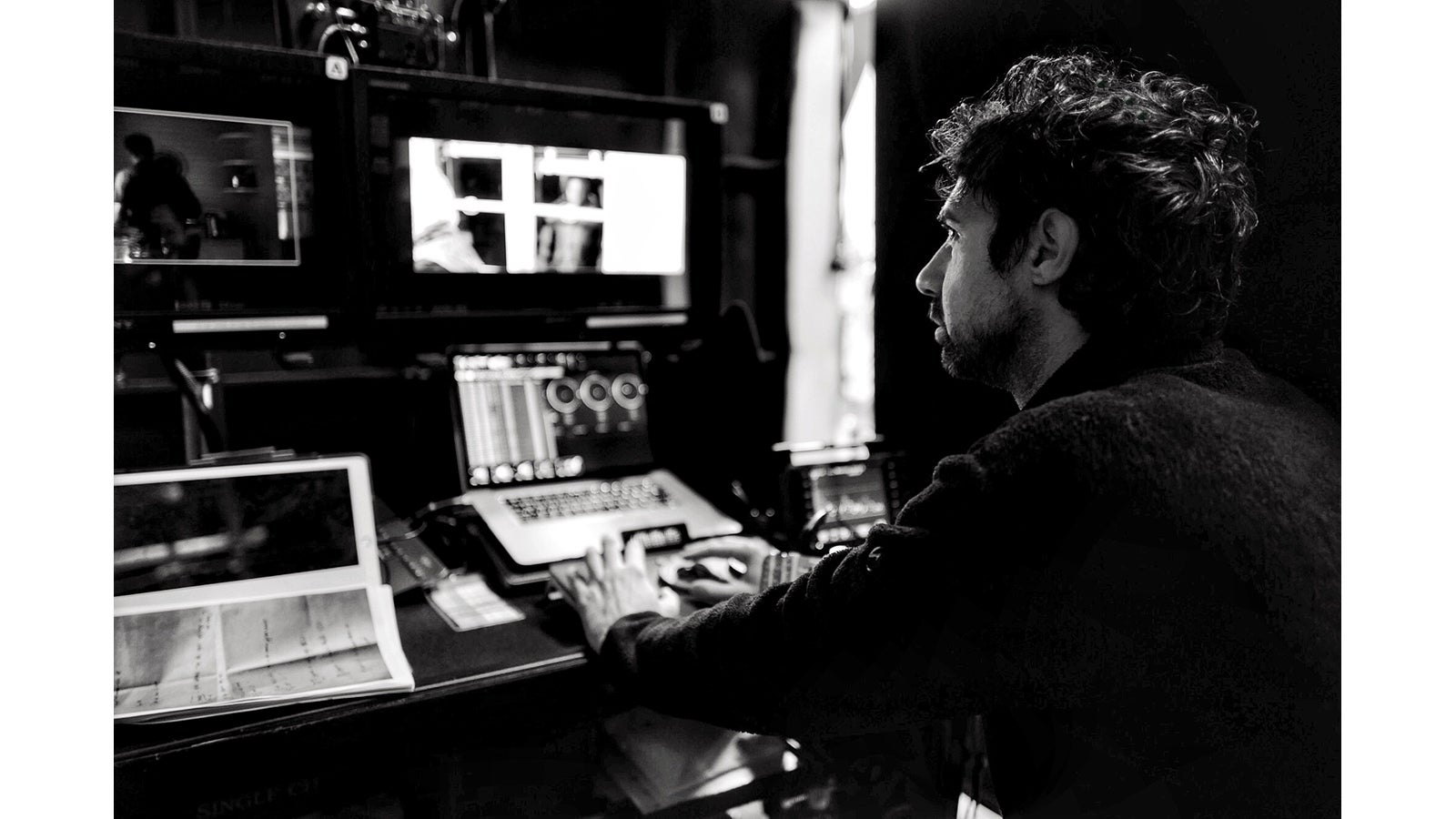
DIT Daniele Colombera. Photo: Tristan Chavez
For lenses, explained Colombera, “with 1st AC Larry Nielsen we tested all the specialty lenses we could find, and ran out of everything they had at Keslow and other vendors.” Because Varese wanted to rely on optical and in-camera tricks, rather than visual effects, “it was quite a bit of work, but a lot of fun testing so many lenses, filters, attachments, etc. But that tracks with why and how Sony VENICE works so well, whether using anamorphic or spherical lenses, full frame or Super 35, the camera was pretty much able to marry the features of each one perfectly.”
Part of the show was shot anamorphic and part of it spherical, and as Colombera explained, “Checco decided to opt for the 2:39 aspect ratio so there is a consistent anamorphic look throughout.” The director initially wanted to shoot anamorphic, and as Varese noted, “not every show can be anamorphic and not every director has the discipline to work with anamorphic.” After the third episode was shot anamorphic, Varese steered them into the Mini-Hawk lenses, spherical optical design but anamorphic-like bokeh. “I wanted the anamorphic bokeh without the limitation of the minimum focus,” he said. Nelson agreed with the choice of the Mini-Hawk, and a few Angenieux zoom lenses were added. Varese was the first cinematographer to use the Mini-Hawk on “It: Chapter 2” and had two sets available for “Them.” Grobet noted that the first set of lenses chosen, Hawk anamorphic, “are very sturdy, which I like, but with close focus, we had to bring in diopters, so it was challenging. When we switched to Mini-Hawk, which were spherical, it made it easier for speed and efficiency.”

Suki Medencevic, ASC lining up a shot on a Hawk V-Lite 2x anamorphic lens
Varese brought his DI colorist on board, Stefan Sonnenfeld of Company 3. “He’s an extraordinarily great colorist and has done almost all my movies,” said Varese. “And, he’s a friend.” After extensive camera tests and a long screening session at CO3, a show LUT was ready. “I’m very methodical about that, nothing gets out of my hands without me looking at it, or Daniele, who is an extension of me, but taller,” Varese joked. “I don’t watch dailies, but as soon as I wake up in the morning, I scan through the frame grabs.”
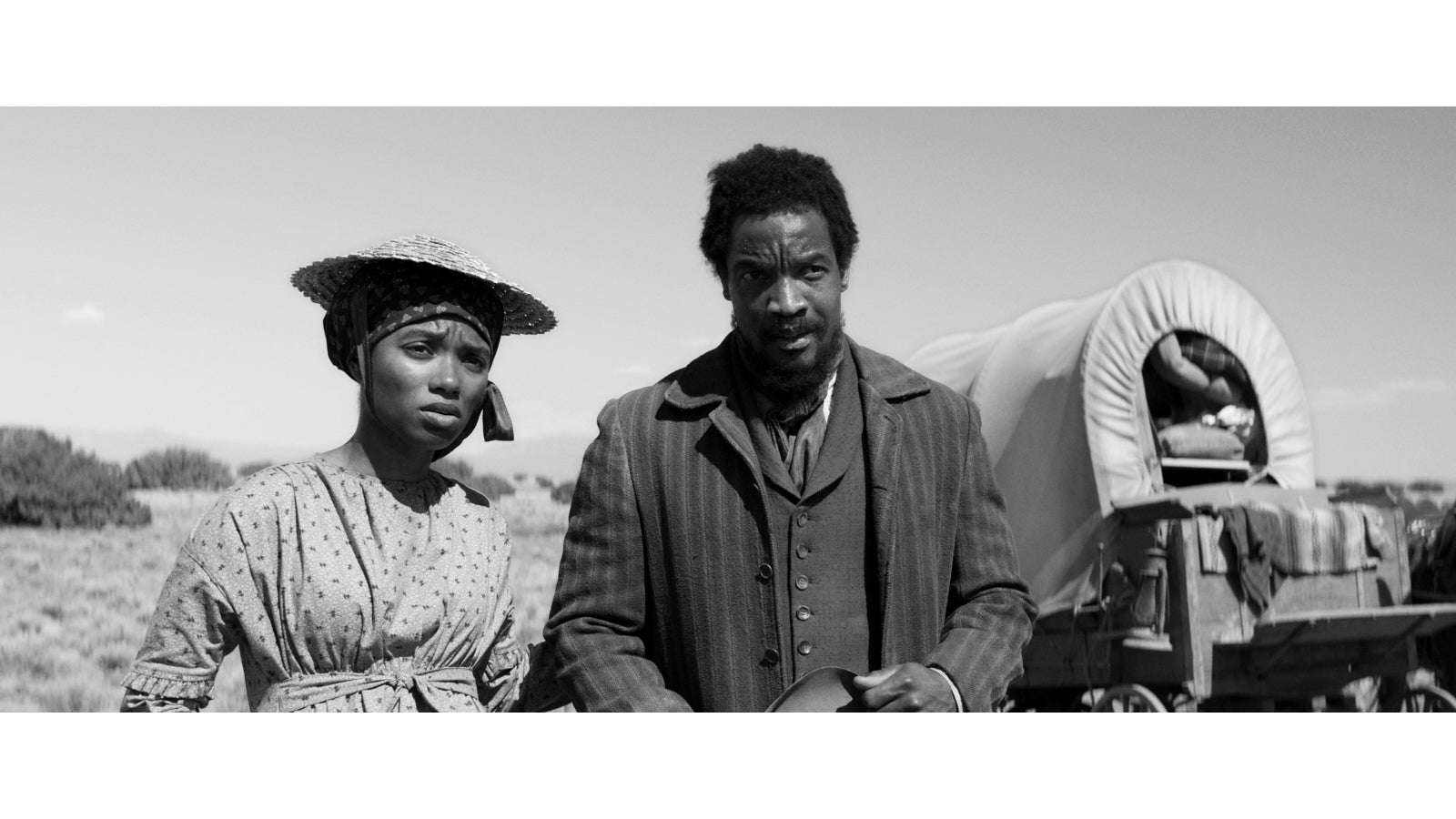
The show starts out with a flashback, and then moves into current day, with an entire episode shot in black and white. Varese explained that the way Little Marvin had framed it summarized the overall look of the show: a 1950s movie, shot through the lens of a 1970s movie, with the technology of the 21st century. “Imagine the 1950s shows, where the camera doesn’t move, and the actors come into the shot, then you cut into a split diopter, and the next scene has a zoom that switch pans back to another character. Very ‘French Connection’,” said Varese. “We carefully combined all these aspects, in a limited amount.” For the first scene of the show, the flashback, Varese said, “You have to understand it is an information piece for the audience, and it has to be different, but not so different it’s jarring. Because it’s another time and place than where present day is happening, I added a Tiffen 1 chocolate filter, which enhances the greens and yellows to make it vintage looking.”
When the family moves to Compton, the street their house is on appears to be a perfectly manicured neighborhood with an overabundance of pastels. All the neighbors are white. “The show had these two realities: one is the family moving to Compton and dealing with the white neighborhood, and the other is the inner world each character is going through. They all have their own ghosts and visions they each have to deal with,” said Grobet.

Photo: Anne Marie Fox - Amazon Prime Video
The Compton Street was located in Pacoima, at RSI Locations, where the production team had an existing street with eight houses and put facades on them to create the street. Varese explained how he achieved the pink and yellows of the street. “We had eight or nine streetlights that were tungsten, and we had one Condor on one side of the street, one on the other side and one in the middle, behind one of the houses. They were half and half, so half could be moonlight and half could be streetlight. The one in the middle had an array of LED tubes that could be color, so if we wanted a nice warm scene, or we wanted a hard scene, we could change the color of the tubes.”
Several key scenes take place in the basement of the Emory’s new home. In stark contrast to the pink and yellow hues of the street, the interior of their home was ambers and yellows. Varese gave kudos to production designer Tom Hammock, who was a “key element of that. He and Little Marvin had many, many conversations about it. I had a say in the amount of yellow, and whether it should be blue or not. Unless I was specifically asked, I addressed the saturation, not necessarily the color.” The production team made the basement footprint as big as the house, and both cinematographers shot scenes there.
For Grobet, there was a tricky scene when the youngest daughter sees her ‘ghost’ down there. “The question is, how much do you want to see? Sometimes it was hard to be in the corner of the black box.” Varese explained that the basement was covered so “we strategically placed a bulb here and there. There were windows that had daylight. The VENICE is very generous with the lack of light and ability to create shadows.” He mentioned that both he and Grobet had shot music videos in the 90s, and lit African American skin tones, “which are very beautiful. I worked with the makeup department so the sheen on their faces can be picked up with a light that finds the highlights of their skin.” The basement had a few windows in the back to allow daylight in, paired with individual lamps “which we moved around depending on the scene. I tried to keep it very localized, to allow the feel of the darkness, paired with atmosphere we used throughout the whole show,” explained Grobet.
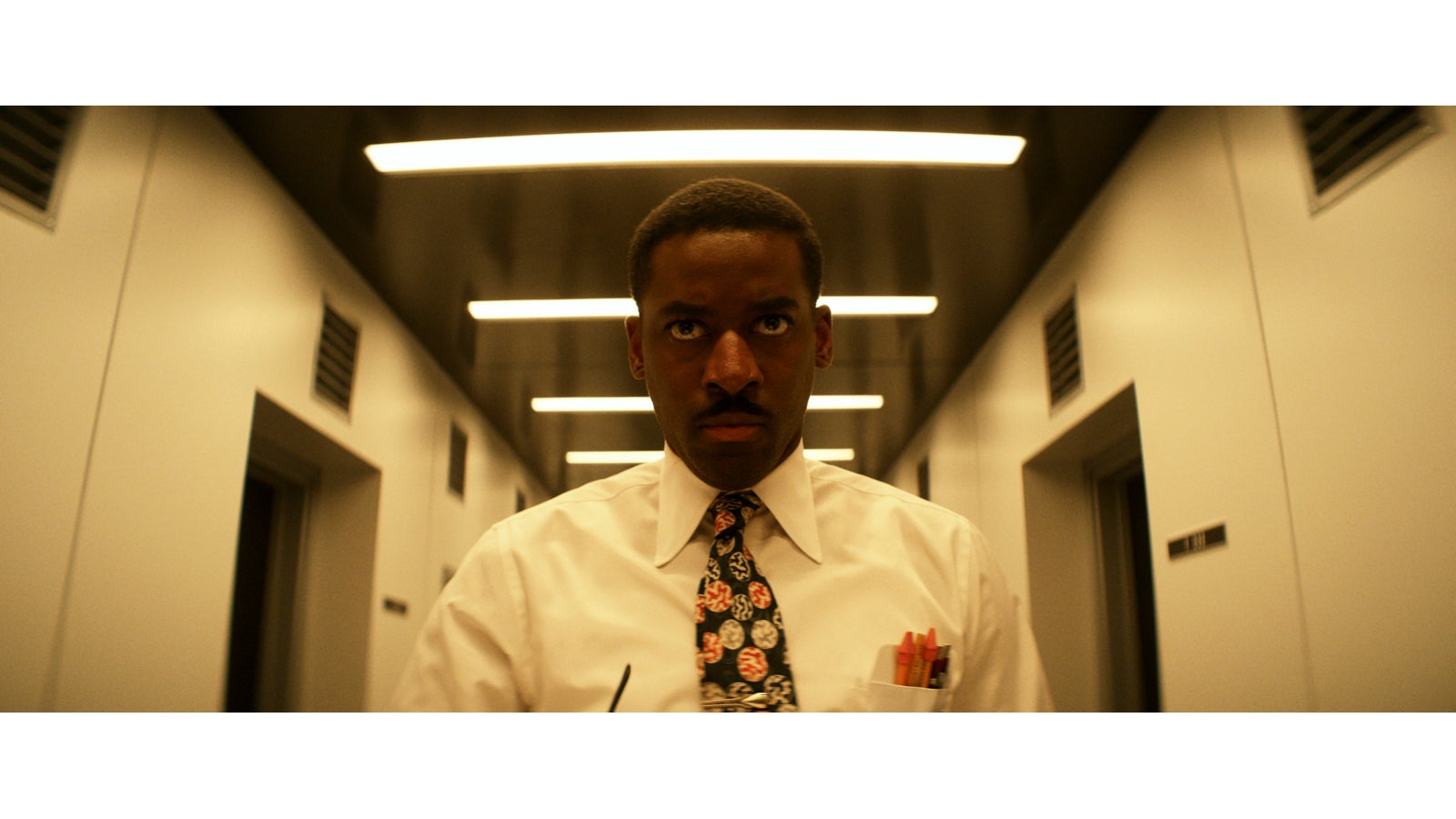
As Grobet explained, “Every episode has its own thing,” and he was tasked with Henry Emory’s workplace, a Black man in what was then a white man’s world. Henry is hired sight unseen as an engineer, and finds his workplace mirrors the bias going on in his neighborhood. His office space is one of light blue and gray colors, which “I chose to use practical lights, practical fluorescents over the desk, but very minimal,” said Grobet. The hallways reflect a very bright, white sterile look, which at one point morphs into a yellow tinge. “I don’t know where I got the idea, but I wanted to reflect a flashback and found I could do it on set,” said Grobet. “I asked our art department to build slots where the bulbs would be, then we brought in our own LED fixtures, that were then synced to our dimmer board. When I saw the set for the first time, it had a rainbow sequence, but eventually, I landed on this mustard color, so as he walks into the corridor, it phases into that color.” It was all created with practicals, “which is what was one of the fun things about this show.”
Varese had two shows that really pushed the envelope. Episode 8 was the prequel to the story of the present day horror, which Varese and Little Marvin wanted black and white, but Amazon wasn’t sure. “Little Marvin asked me if I could shoot in color and time it black and white, which I would have done anyway. But it comes down to makeup and wardrobe.” Varese prodded wardrobe to tweak the colors on clothing, to pre-empt the possibility of black and white. “For black and white your shadows have to be longer, because you don’t have color to tell the story. The fire in black and white is different from the fire in color. We made a color correction in color, and one in black and white and the studio said it definitely should be black and white. I didn’t steer them in any direction,” explained Varese.
The shoot took place in Santa Fe at a ranch with some existing structures that the production designer painted in a stark ivory color. Because the barn was a very tight wood, Varese and his crew took some wood out to create slashes. “We had a 20x40 bounce outside, and I asked the Rag Company to create a special bounce for me, like a checkerboard with hard silver alternating with soft silver. Then we added a plethora of HMIs in the ground to light this big bounce, so we could easily change the bounce with this mirror-like surface. Lastly, we added smoke inside.”

Grobet was tasked with lighting a hangar where a work party for Henry Emory takes place. It was an old Zeppelin Blimp hangar in Tustin, “which had a grandiose quality,” he explained. “It was tricky, because the place has these translucent greenish skylights around the whole building, and of course, as the sun drops, the color shifts.” Since they only had one day to shoot, “I brought in helium balloons to light the space, and a couple of scissor lifts. I chose to put everything on one side, so I could have all the lighting there. Towards the end, we had to do a little bit of tweaking in color, because I started to lose the greenish tint.”
For Varese, the most difficult and rewarding scene he shot was in Episode 3, when Lucky Emory boards a bus late at night in LA on her way home. The scene was so extraordinarily sophisticated that the studio hired Suki Medencevic, ASC to shoot the rest of the episode so Varese could put his full concentration on that scene. “It was a big responsibility for a scene that could have been 100% visual effects, but in the end we had very little,” he admitted. The scene involves a bus that she steps onto, which was a vintage 1950s bus, on a stage with LED walls. Varese mentioned there is this myth about these LED walls, “that you don’t need to use lights. Rather, the LED walls become your green screen, your backdrop.” They hired a company that drove through the city and shot the plates, but once you are driving, “and a lamppost goes through, you have to create the effect of the lamppost. So we created two lines of lights coming into the bus, behind and above the LED walls. We also wanted to be able to shoot 360, so we surrounded the bus with LED lights.” Between the dimmer board operator and the driver, Varese had to create an algorithm that allowed for the traveling light to move at the speed of the bus, while also syncing it with the lights on the walls, “so it makes sense.” On top of that, the scene called for rain, so all the fixtures inside the bus had to be replaced with new LED lights. “I’m very technical and at the same time artistic, and I was ecstatic that is worked. It was so emotionally rewarding to put all my eggs in one basket and none of them broke,” Varese said.
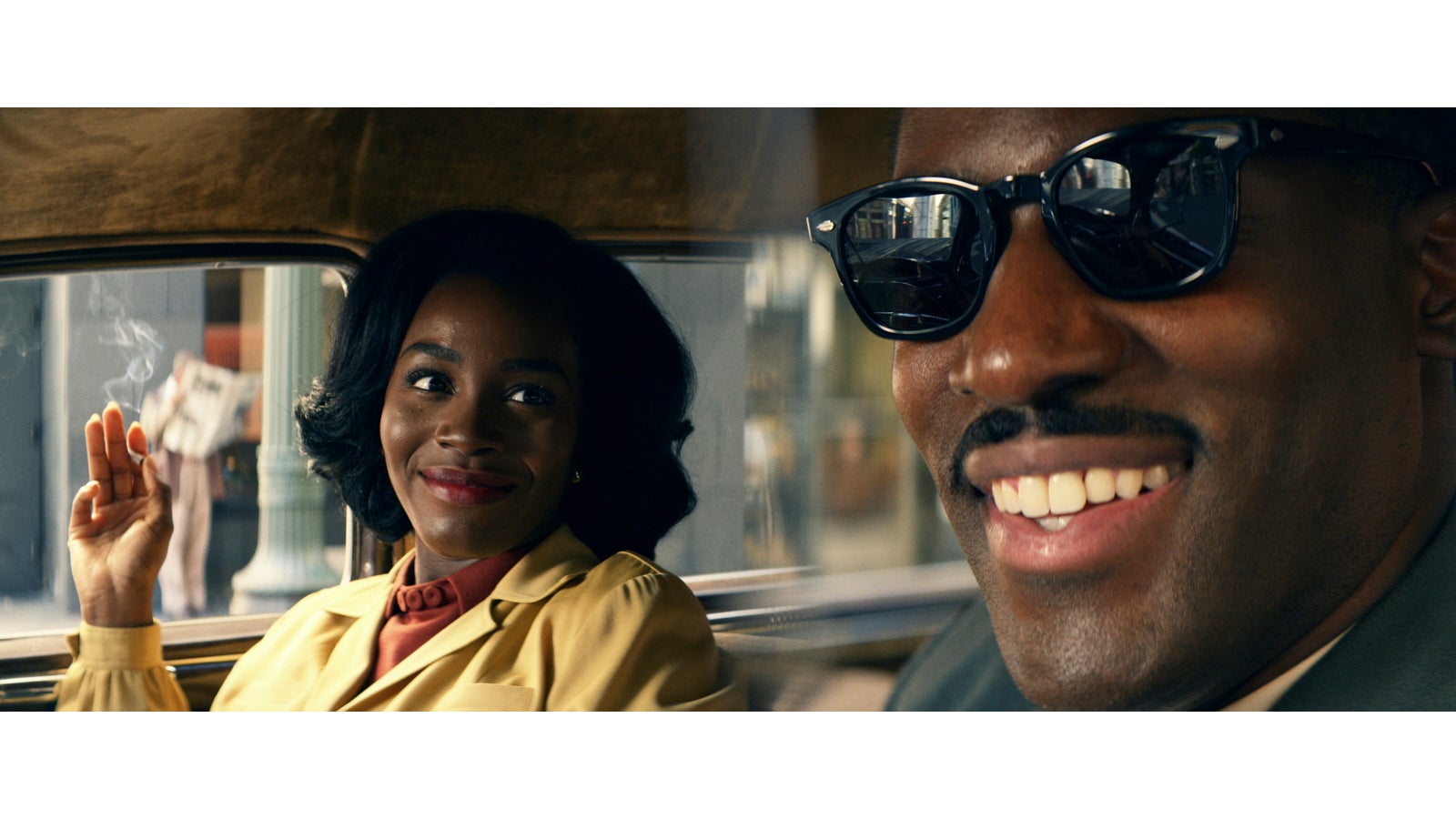
For Grobet, “As we went along, the show really started to have it’s own language. I think more than the lighting, there was the camera language.” Varese added, “The beauty of this show is that we made a horror show with the sophistication of a beautiful feature, a studio movie, on a general budget. But it wasn’t out of control. I never thought we were overspending and underachieving; in fact, it was the opposite. We had a fantastic crew, fantastic leadership and fantastic tools. The Sony VENICE was great for what it needed to deliver, and we had carte blanche on the look of it, which was very rewarding.”

